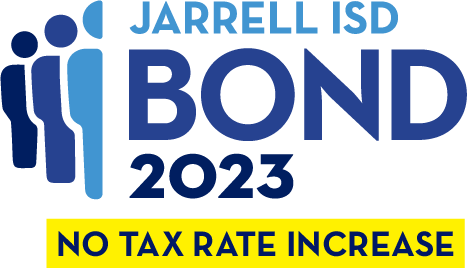
FAQ
Frequently Asked Questions
What is a bond?
Just as homeowners borrow money in the form of a mortgage to finance the purchase of a home, a school district borrows money in the form of bonds to finance construction, renovation, and other capital projects. Both are repaid over time, but in order for a school district to sell bonds, it must ask voters for approval in the form of a bond election.
How can bond funds be used?
Bond funds can be used to pay for new buildings, additions, and renovations to existing buildings, land acquisition, technology, buses, and equipment, among other items.
By law, bond funds may not be used to fund daily operating expenses, such as salaries or utilities, which are paid for out of the district’s Maintenance & Operation (M&O) budget.
Why do you need a bond election?
School districts are required by law to ask voters for permission to sell bonds to investors in order to pay for capital expenditures for projects like building a new school or making renovations to existing facilities. Districts take out a loan and then pay that loan back over an extended period of time, much like a family takes out a mortgage loan for their house.
How will the 2023 bond election affect my district taxes?
There will be no tax rate increase associated with this bond. State law caps the debt service (I&S) tax rate at $0.50, so regardless of the outcome of this bond election, the district’s I&S tax rate cannot be increased. The district can make all existing and future bond payments with the existing tax rate.
Similarly, the 2021 bond referendum didn’t require a tax rate increase. The bond passed and nearly all projects are already complete or under construction, yet JISD has not increased the tax rate - and will not- as promised during the campaign.
Why does the ballot language say this is a tax increase?
A new state law requires the ballots for all school bond elections to include a sentence that states “THIS IS A PROPERTY TAX INCREASE.” The sentence is required even if no actual tax rate increase will occur.
However, if approved by voters, this bond would not increase the district’s tax rate. In fact, the Jarrell ISD debt service tax rate, by law, can’t be increased beyond the existing $0.50 rate. No increase in the total tax rate is necessary to pay off the bonds associated with this bond proposal.
How can Jarrell ISD afford to issue bonds without an increase to the tax rate?
The main reason the district can issue new bonds without increasing the I&S tax rate is due to rapid growth in the community. As new homes and businesses are built, those are added to the district’s Taxable Assessed Value (TAV). The amount of taxes levied by Jarrell ISD are calculated by multiplying the district’s tax rate by the taxable value of the property within the district. As commercial and residential development continues to grow in Jarrell, so does the taxable assessed value.
What about the 2021 Bond?
Jarrell ISD voters passed a bond in 2021 that was split into 2 propositions. The projects included addressed growth, aging facilities, and athletic improvements. Every project is either under construction or already complete with the exception of the Jarrell High School expansion which is currently in design. Find out more about the 2021 Bond here.
Have a question?
Let us know!
Submit your questions below and we will get you the answers you need!
